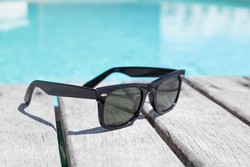 Counterfeit eyewear goods are taking a heavy toll on manufacturers' revenues, and the problem looks likely to escalate, says a new report.
Counterfeit eyewear goods are taking a heavy toll on manufacturers' revenues, and the problem looks likely to escalate, says a new report.
The eyewear market overall is set for buoyant growth between 2015 and 2019, with a compound annual growth rate of more than 7 per cent over the period by value and 3.5% by volume, but the availability of counterfeits presents "a big market challenge," says report publisher Technavio.
"Sunglasses and contact lenses are the most affected product categories by counterfeiting in the eyewear market," Technavio analyst Arushi Thakur told SecuringIndustry.com, adding: "Ray-ban, Gucci, Dolce & Gabbana, Louis Vuitton and Versace are some of the brands most affected by counterfeiting."
While the impact of this activity is hard to gauge, the report suggests that on average, manufacturers lose between 15 and 20 per cent of their market revenues annually due to fake products, according to Thakur.
Technavio believes counterfeiting of design, style and brand in eyewear products will see an upward trend in the coming years, driven by consumer complicity and a preference towards buying these products at much cheaper prices, as well as increasing sales of fakes through online channels.
Counterfeiting is also a low investment/high return business, with the criminals involved in the trade making huge profits from sales of these products "as they do not have to spend money on R&D, service and advertising."
China is the major source for counterfeit eyewear products, says Thakur, while other Asia-Pacific countries - notably Indonesia, India and South Korea - also have a high prevalence of counterfeit eyewear products.
Starting the fightback
A few manufacturers have forged alliances with online retailers and have come up with guidelines to help customers identify the original product.
For example, Gucci and eBay have developed distinctive labels for glasses which appear on the retail box, carry case, dust cloth, authenticity card, manufacturer sticker, and both arms of the sunglasses. The labels feature a logo, specific font size and other things that can help the user to distinguish between original and fake product, according to Thakur.
Formulation of policies related to counterfeiting is another measure. For instance, the Luxottica group has an anti-counterfeiting policy which allows them to take prompt legal action against manufacturers, wholesalers, retailers, and distributors of counterfeit products. This group has also taken measures to remove counterfeit eyewear products from online auction platforms.
Globally, manufacturers are also investing in anti-counterfeiting technologies and systems to protect their goods, including product identification and tracking, investigative efforts and legal prosecution, he said.
Image courtesy of Shutterstock / Kaspars Grinvalds
©
SecuringIndustry.com




 Counterfeit eyewear goods are taking a heavy toll on manufacturers' revenues, and the problem looks likely to escalate, says a new report.
Counterfeit eyewear goods are taking a heavy toll on manufacturers' revenues, and the problem looks likely to escalate, says a new report.